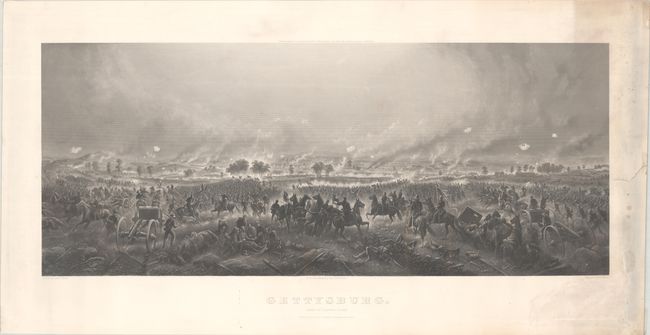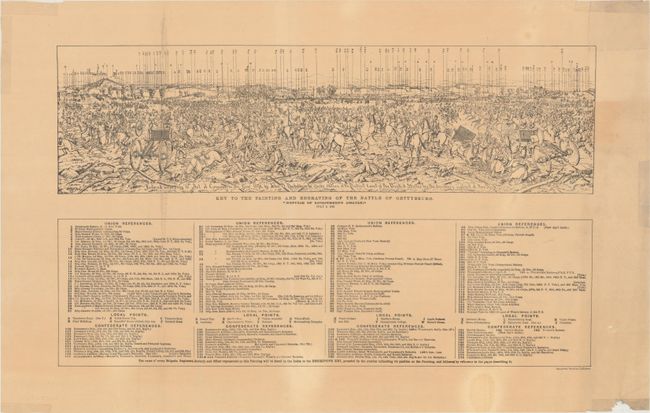Subject: Gettysburg, Pennsylvania, Civil War
Period: 1876 (dated)
Publication:
Color: Black & White
Size:
35 x 14.4 inches
88.9 x 36.6 cm
This scene depicts Pickett's Charge, which Bachelder reported was "the high water mark of the Confederacy." On July 3rd, 1863 General Robert E. Lee ordered Lt. Gen. Longstreet and his commanders (including Pickett) to assault Union General Meade's positions on Cemetery Ridge. Approximately 12,500 Confederate soldiers marched across open fields in an attempt to breach the Union lines, but were ultimately repulsed and suffered a 50% casualty rate. While the war would continue for another two years, the Confederates never launched another offensive campaign. Engraved by H.B. Hall Jr. and based upon a much larger painting by James Walker under the supervision of Bachelder.
This example is accompanied by a key that was printed by Heliotype Printing Co. in Boston. The sheet features a simplified engraving of the view with over 125 items numbered on the view and an extensive key below identifying each item, including every Brigade, Regiment, Battery and Officer represented in the image, as well as specific locations.
John Bachelder was a portrait and landscape painter, lithographer, and photographer. During the Civil War he accompanied the Army of the Potomac and made many sketches of military life and important battles. He is best known as the historian of the Battle of Gettysburg and was a dominant factor in the preservation of the Gettysburg Battlefield.
References:
Condition: B+
A nice impression on a bright sheet with a few faint spots in the image, a few spots to the left of the title, soiling and dampstaining along the right edge of the sheet, and soft creases along the sides of the sheet. There is a tear confined to the right margin that has been closed on verso with linen. The key is issued folding with light toning, some extraneous creasing, minor soiling, a few tiny holes along the folds, and two tears that just enter the image in the top corners and have been closed on verso with archival tape. There are a few small chips along the edges of the sheet that have been closed with tape.



